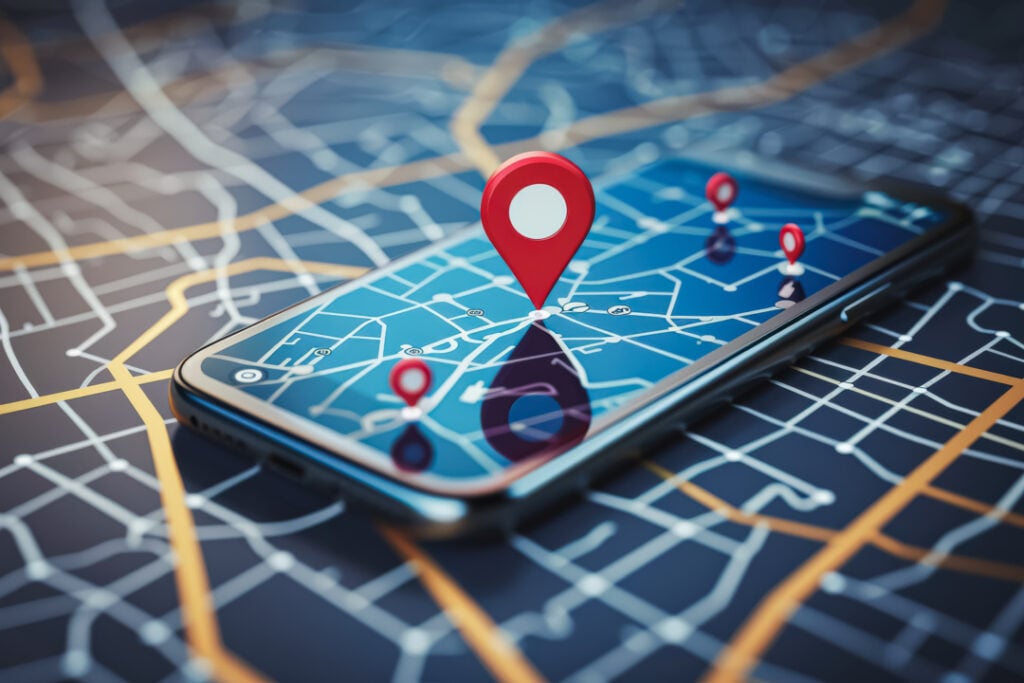Consistently recognized as one of the top software development companies on Clutch, the Volpis team has spent years providing navigation app development services to businesses across diverse industries. Here, they will explore essential and advanced functionalities that enhance the usability and accuracy of navigation apps.
Essential Features of Navigation Apps for a Seamless Navigation Experience
- Accurate and Real-Time Route Information The primary function of any navigation app is to provide accurate, real-time directions. Ensuring that your app offers precise routing information is crucial for user satisfaction. This feature should include turn-by-turn navigation, alternative route suggestions in case of traffic delays, and real-time updates for ongoing road closures, accidents, or hazards. Integrating live traffic data helps users make informed decisions and avoid congested areas, ultimately saving time.
- Offline Maps and Navigation Internet connectivity is not always reliable, especially in remote areas or while traveling abroad. Providing offline functionality for your navigation app is essential to ensure users can still access maps and directions without needing an active data connection. Offline maps should be downloadable and cover extensive areas to give users peace of mind when traveling to places with limited internet access.
- User-Friendly Interface (UI/UX) Design A clean, intuitive user interface (UI) can make a significant difference in the user experience. The interface should be easy to navigate, with clear, readable text and icons. Users should be able to input destinations quickly and get directions with minimal effort. The design should also be optimized for use in different environments, such as day and night modes to enhance readability in varying lighting conditions. Keep interactions simple and streamline the process of receiving directions, changing routes, or adjusting settings.
- Voice Navigation and Feedback Voice-guided navigation is crucial, particularly when driving or walking. It enables users to focus on the road or their surroundings without needing to look at their screen constantly. The voice instructions should be clear, concise, and available in multiple languages. Offering options for voice tone and volume control allows users to tailor the navigation experience to their preferences.
- Search Functionality and Location Suggestions A robust search feature is a must for any navigation app. Users should be able to search for addresses, businesses, points of interest (POIs), and landmarks quickly and accurately. Autocomplete suggestions can speed up the process by predicting common queries. Additionally, users should be able to filter search results based on their preferences, such as distance, ratings, or type of business, making it easier to find what they need.
- Route Planning and Multiple Stops For users planning a trip that involves multiple stops, your navigation app should include an option to plan and optimize routes with several destinations. This is particularly useful for logistics, deliveries, or travel planning. The app should intelligently optimize the route to save time and reduce fuel consumption, factoring in traffic, road conditions, and distances.
- Location Sharing The ability to share your real-time location with friends, family, or colleagues is a valuable feature, especially in emergency situations or when meeting up with others. A navigation app with this feature allows users to send their exact location and estimated arrival time, ensuring that others can track their progress and stay informed.
Advanced Features of Navigation Apps for Enhanced User Experience
- Augmented Reality (AR) Navigation Augmented Reality (AR) navigation is a cutting-edge feature that superimposes navigation instructions onto the real world, making it easier for users to follow directions. For instance, AR can display arrows or virtual signs overlaid on the actual road or environment, offering a more intuitive way to navigate. This feature is particularly helpful in urban areas with complex intersections or while walking, as it provides clear visual cues that enhance the user’s spatial awareness.
- Personalized Route Suggestions Advanced navigation apps can analyze user behavior, preferences, and historical data to offer personalized route suggestions. For example, if a user frequently travels through certain routes or avoids specific roads, the app can learn and predict those preferences. It can also take into account factors such as preferred arrival times, traffic patterns, and road types. Personalization leads to a more tailored, efficient experience that meets individual needs.
- Integration with Smart Devices Integration with smart devices, such as smartwatches, in-car systems, and voice assistants like Amazon Alexa or Google Assistant, enhances the overall navigation experience. Users can receive navigation updates on their wrist, in their car, or through voice commands without needing to interact with their phone directly. These integrations make navigation more seamless and convenient, especially for users on the go.
- Real-Time Public Transportation Information Public transportation integration is becoming increasingly important in urban areas. A navigation app that incorporates live data from buses, trains, trams, and subways can help users plan their journeys more effectively. Real-time updates on delays, cancellations, or route changes ensure that commuters stay informed and can adjust their travel plans accordingly. This feature is invaluable in cities with complex transit networks.
- Crowdsourced Data for Road Conditions and Hazards Crowdsourced data can improve the accuracy of your navigation app. By allowing users to report road conditions, accidents, or hazards, the app can provide more up-to-date information for everyone. This type of data can be particularly useful for areas that may not be covered by traditional traffic data sources, enhancing the app’s reliability and trustworthiness.
- Carbon Footprint and Eco-Friendly Routing As environmental concerns grow, offering an eco-friendly route option can appeal to users who are conscious of their carbon footprint. Eco-friendly routing calculates the most fuel-efficient or least polluting routes, taking into account factors like traffic, road type, and elevation. This feature not only helps users save fuel but also promotes sustainability.
- Weather Integration Weather conditions can drastically impact navigation, especially during extreme weather events like snowstorms or heavy rain. An app that integrates weather data can offer alternate routes or provide real-time updates on changing conditions, such as slippery roads or low visibility. This proactive feature ensures that users can navigate safely and avoid potential hazards.
Final Thoughts
The development of a successful navigation app requires a balance between essential features that cater to everyday needs and advanced functionalities that enhance convenience, safety, and personalization. Whether you’re building a navigation app for commuters, travelers, or specific industries like logistics or healthcare, focusing on both essential and advanced features will provide the optimal user experience that keeps users coming back.
Caroline is doing her graduation in IT from the University of South California but keens to work as a freelance blogger. She loves to write on the latest information about IoT, technology, and business. She has innovative ideas and shares her experience with her readers.




![‘Hamnet’ Review – A Devastating, Exalted Work Exploring Grief Through Art [TIFF 2025] ‘Hamnet’ Review – A Devastating, Exalted Work Exploring Grief Through Art [TIFF 2025]](https://cdn.geekvibesnation.com/wp-media-folder-geek-vibes-nation/wp-content/uploads/2025/09/Hamnet-4238_D005_00229_R-300x169.jpg)

